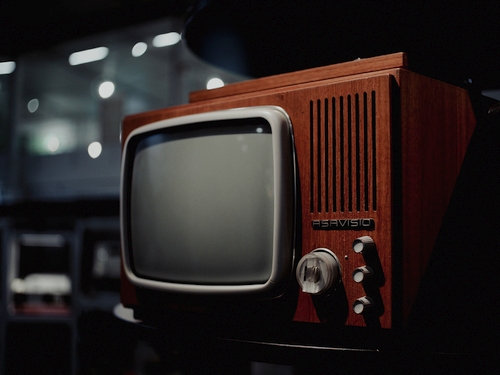Are you a fan of retro gaming? Do you have a Sega Genesis or a Super Nintendo sitting in your attic, waiting to be dusted off and fired up? Well, if you’re like me, you know that playing these classic games on a modern TV just doesn’t cut it. A mate of mine is an avid retro gamer and that’s why he decided to take on the challenge of modding an old CRT television to bring his retro gaming experience to the next level.
Now, let me preface this by saying that working on CRTs can be dangerous and should not be attempted without a good understanding of safety precautions. I’m not responsible for any harm or damage done to anyone or anything, so proceed at your own risk. Also, if you have epilepsy or photosensitivity, I do not recommend watching this video due to flicker caused by scanning.
So, why did he take on this challenge? Well, his friend and fellow CRT enthusiast, DJ Calle, challenged him to redeem himself after drilling into the side of my last CRT. This time, he wanted to do a no-cut mod, which means I couldn’t cut into the plastic casing and the mod had to be reversible. This is the gold standard in the retro gaming community, as older mods meant cutting permanent holes out of the console to make way for switches and video ports. Let’s just say, those old mods left consoles looking like Swiss cheese.
For his mod, he chose a Sony KV14VM5G 8s, which is a 14 inch VCR combo that has composite video and mono audio. I just love these combo units and their perfect marriage of two obsolete technologies. Plus, I always use an expandable VHS when testing a VCR just in case it chews the tape.
He based his mod on the RGB mod that Dave from the EEV Blog did on the same model Trinitron. He mapped out the RGB and fast blinking inputs, which made the job a lot easier. Basically, for this mod to work, there needs to be analog RGB inputs on the video chip, or jungle chip. An RGB mod can technically be carried out at the neck of the CRT, but you’ll lose any adjustments that the jungle chip performs, such as brightness and contrast. And unless it’s done to precision, you’ll risk having poor clamping and black levels.
The on-screen display, or OSD, is typically generated by a separate chip that feeds into the jungle chip’s RGB signals. When a button is pressed to bring up the OSD, there’s a nominal voltage being sent to the fast blinking pin on the jungle chip to switch into RGB. If you’re lucky, the RGB inputs might be unpopulated, which leaves them free to use without needing to maximize the RGB signal.
So, I found the second video chip, which was located on a removable board, and luckily, it had unpopulated RGB inputs that terminate to ground with SMD caps. These pins are what I’ll be tapping into, and this also means that the OSD should display when in RGB video mode.
He ended up soldering his own 0.1 microfarad ceramic caps to the RGB lines and removing the SMD terminating capacitors along with the pull-down resistor on the blanking pin. I also had to find a port that could carry at least three more signals for red, green, and blue. The auxiliary jack looked like the perfect candidate, but it turned out to be more complicated. He measured up a replacement port that would fit perfectly in the space of the old connector, and bridged pin 3 to ground to activate the audio circuit – which would have otherwise been muted due to its connection to the auxiliary port.
Even after setting up the connections, there were still adjustments to be made to the align the cathod ray with the Red Green Blue phosphor of the screen to reduce some of the distortion. This was a little dangerous and required some specialist tools and adjustment pieces. The end result is a perfectly modded CRT display with touch sensitive switch and excellent picture quality for retro gaming.
https://www.youtube.com/@djcalle1975
https://www.youtube.com/@EEVblog
So, the next time you’re faced with a similar challenge, don’t give up. With a little bit of determination, patience, and the right equipment, you can achieve the seemingly impossible. Who knows, you might even get to experience your favourite classic games in a whole new way.

